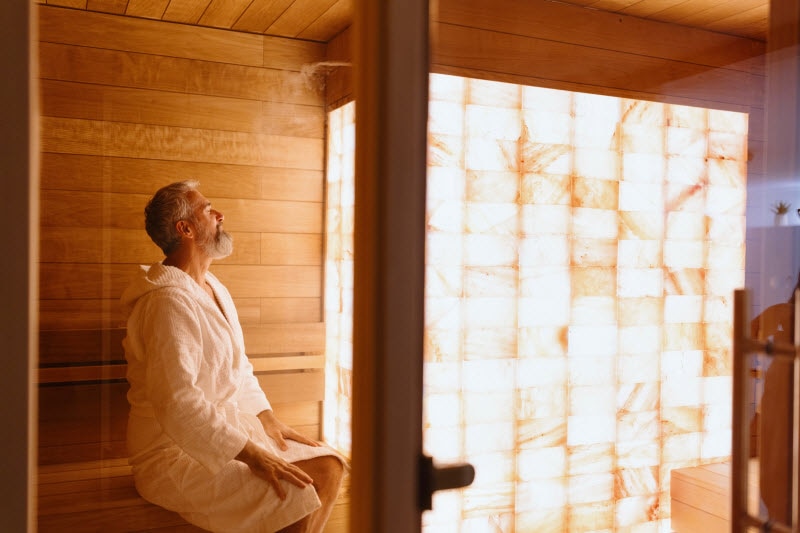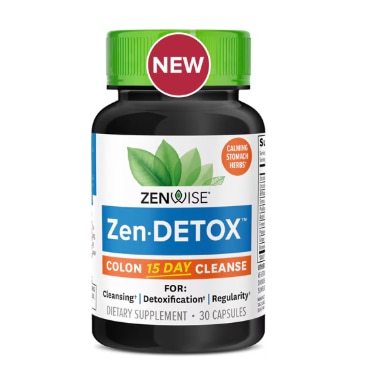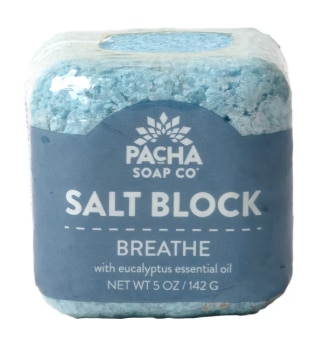Somewhere between the biohacking craze and the post-pandemic burnout period we now inhabit, saunas slipped quietly back into style. Once the domain of stoic Nordic countries and gym basements, they’ve reemerged as a darling of the wellness world, embodying the best of analog living—a place to sweat, decompress and remember what it feels like to inhabit a body that isn’t scrolling.

Since the pandemic, the obsession with wellness has matured from quick-fix fads to long-view lifestyle changes. The longing for a slowed down, emotionally elevated way of life is measurable — and profitable. The North American sauna market hit $1.2 billion in 2024, and analysts predict it’ll grow by another $151 million from 2024 to 2029. It’s fueled by a renewed appreciation for whatever can boost resilience, such as how to calm a haywire nervous system, lower stress hormones and age with vitality.
Enter the sauna, the new “third space” for the chronically exhausted human. The idea of the third space is a sociological term coined by urbanist Ray Oldenburg to describe informal gathering places that exist between home (the first space) and work (the second). Third spaces can run the gamut of cafés, bars, barber shops, yoga studios or community parks—places that anchor social life and foster connection outside the transactional or domestic realms.
A sauna, especially if shared with others, can be a wonderful way to connect outside of the work/home binary. The newer “social sauna” model, where people gather, share rituals, breathe and rest together, can amplify mental well-being, reduce loneliness and offer a phone-free zone to reconnect.
5 Proven Benefits of Saunas for Your Body and Mind
Here are some of the other major perks that saunas can offer you.
A reset that comes in hot
Saunas offer a kind of structured stillness: no screens, no performance, just heat and surrender. There’s evidence that saunas are an effective way to unwind for those who have high-stress work or personal situations. Saunas do seem to show improvement in anxiety, as the heat triggers the release of feel-good endorphins.
Here’s how it works. Heat exposure nudges your body into mild stress, prompting adaptive responses that build resilience. Your heart rate rises, blood vessels dilate and circulation improves. As your body cools afterward, it shifts into parasympathetic mode, the “rest and digest” state your nervous system rarely gets to hang out in.
This radical relaxation can lower cortisol, promote deeper sleep and boost levels of endorphins and dopamine, your brain’s natural mood stabilizers. Many sauna users describe a calm, floaty euphoria afterward. This is not imaginary. It the by-product of heat chemistry and how heat interacts with physiology.
Tip: Start small, such as 10 minutes at 160–170°F. Gradually build to 20 minutes as your tolerance improves. Always drink a full glass of water before entering and another right after.
Makes your heart stronger
Sauna bathing isn’t indulgence; it’s an evidence-backed cardiovascular workout in disguise. A 2018 Finnish study following over 2,000 men found that those who used a sauna 4–7 times a week had significantly lower risks of fatal heart disease and stroke compared to once-a-week users.
The reason? Regular heat exposure improves vascular elasticity and lowers blood pressure. When your core temperature rises, your heart works harder. The effect is similar to a brisk walk. Blood flow increases, delivering oxygen to muscles and organs, and helping your body flush out metabolic waste. Over time, that “heat stress” can condition your cardiovascular system to respond more efficiently.
Tip: Cool down with care. A cold plunge or cool shower can enhance circulation and stimulate recovery, but if you feel dizzy or lightheaded, skip it.
Improves muscle recovery and relieves chronic pain
If you’ve ever sat in a sauna post-gym and felt your muscles unclench, that’s physiology in action. Heat boosts circulation, which helps clear lactic acid buildup and decreases muscle soreness. For chronic pain conditions like arthritis or fibromyalgia, studies show sauna use can ease stiffness and improve range of motion.
One study, for example, showed sauna’s benefits for those suffering from lower back pain. Infrared saunas, which heat the body directly, may penetrate deeper into muscle tissue (helpful for pain relief) while traditional dry saunas encourage surface sweating and relaxation.
Tip: Don’t sauna immediately after intense exercise; give your body 15–30 minutes to cool down first and your heart rate and blood pressure time to normalize. Stretch gently after your sauna—your muscles are more pliable when warm—to maximize the sauna’s restorative effect.
Better mood, deeper sleep
Sauna use has been linked to reduced symptoms of anxiety and depression. Part of the reason is neurochemical: heat exposure triggers the release of brain-derived neurotrophic factor (BDNF), which supports mood regulation and neural resilience. It’s essentially a “fertilizer” for your brain cells. Then there’s the impact of stillness. Spending 15 minutes in a calm, phone-free, deeply embodied space gives the nervous system something the pace of modern life rarely offers, a chance for quiet reflection.
Tip: Try an evening session. The post-sauna cooling period can mimic your body’s natural pre-sleep temperature drop, helping you fall asleep faster.
Spiritual release
Beyond the physical effects, saunas offer something that feels oddly spiritual in an age of endless stimulation. It invites the pause to turn inside. And despite its glossy rebranding, the sauna’s essence hasn’t changed in centuries. It’s a space for transformation, literal and metaphorical, through heat, silence and release.
Cultures across the world have understood this for millennia, hence the array of heat-based rituals from Finnish log saunas to Korean jjimjilbangs to Native American sweat lodges. Each treats heat as both medicine and ceremony to encourage an intentional shedding of what the body no longer needs.
Bonus emerging benefits of saunas:
These benefits are gaining traction, but need more studies.
Lung function
Regular sauna use may help those with asthma or COPD by loosening mucus and hydrating the respiratory tract.
Immune support
Repeated mild heat stress can stimulate white blood cell production, potentially lowering your odds of catching colds.
Cognitive protection
Frequent sauna use has been associated with lower rates of Alzheimer’s and dementia, though researchers are still unpacking why. Improved circulation and lower inflammation likely play a role.
Skin and circulation
Heat temporarily dilates pores and capillaries, which can improve skin tone and oxygenation. Despite the “detox” hype, you’re not sweating out heavy metals. You’re simply sweating water and electrolytes.
The research on sauna use is still evolving, but the pattern is consistent. Regular, moderate sauna sessions appear to support heart health, ease chronic pain, reduce stress, and even improve mood and sleep. Plus, saunas offer a compelling reason to slow down, tune in and drop out, however briefly.
Featured Products



The post The Hottest Comeback in Wellness: 5 Proven Benefits of Saunas for Mind and Body first appeared on The Upside by Vitacost.com.
